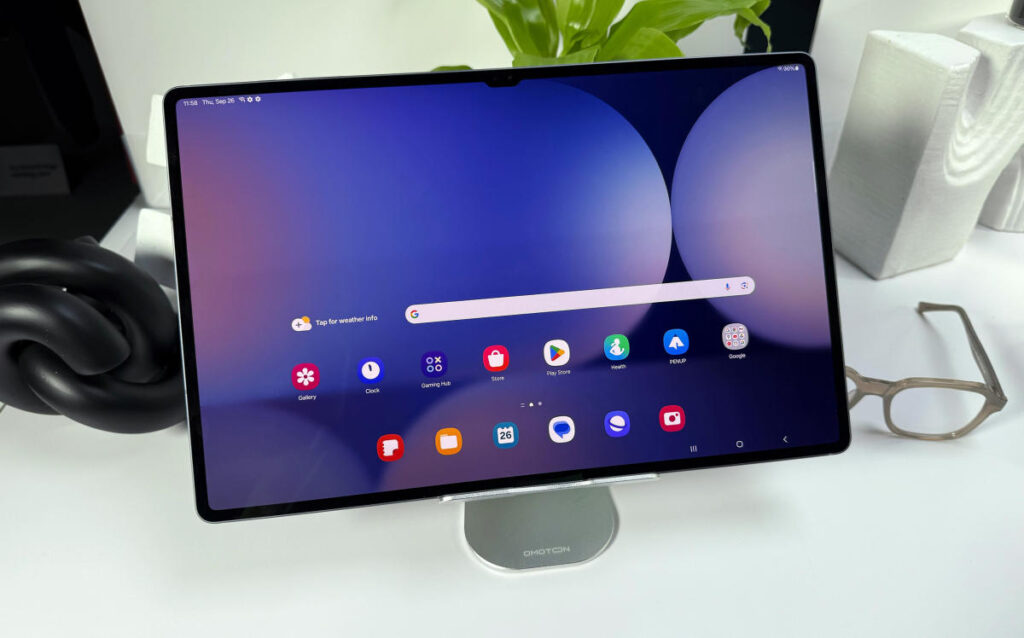In a surprise 30-minute event that could have been an email today, Samsung announced new additions to its portfolio of devices this year, including the Galaxy S24 FE and Galaxy Watch FE LTE. But the highlight of today’s news has to be the new Galaxy Tab S10 tablet. Because this tablet has long been considered the best premium Android tablet. The Galaxy Tab S10+ and Tab S10 Ultra start at $1,000 and $1,200, respectively (same price as the iPhone 16 Pro and Pro Max) and are available for pre-order today ahead of their October 3 release date.
With the Tab S10 series, Samsung has introduced Galaxy AI to this category, declaring that it has made AI available to everyone. Features introduced on the company’s flagship S24 smartphone earlier this year, such as “Circle to Search” and “Sketch to Image,” are now supported on tablets, as well as “Handwriting Assist” and “Handwriting Assist” powered by the S24 Ultra’s S Pen. It also has features such as “Note Assist”. Having used the new hardware for some time now, it’s too early to tell whether these updates will work or not, but I can say that they’re probably still the best Android tablets out there.
When I picked up the Galaxy Tab S10 Ultra at a Samsung event today, I was once again struck by how thin and light it was, even though I’ve already experienced the same feel with all of Samsung’s previous tablets. To summarize, the Tab S10 Ultra has a 14.6-inch screen, while the Tab S10+ has a 12.4-inch screen. Both of these AMOLED panels have an anti-reflective finish and despite being very slim, the device is IP68 rated for durability. It feels like a blade you could use to slice a very soft sponge cake.
I was able to lift the Tab S10 Ultra with almost no effort or muscle strain. Navigating a screen this wide is usually difficult, but the fact that it can be easily handled with one hand made things easier.
There are no major changes compared to the Galaxy Tab S9 other than the S10 series uses MediaTek’s Dimensity 9300+ processor instead of Qualcomm’s Snapdragon chip. We’re not sure if these chips have the power or energy efficiency to effectively perform multitasking or AI tasks, but that’s not something we can tell from a hands-on event.
Samsung’s AMOLED panel remains vibrant and bright, providing a great media consumption experience. Under the harsh lighting set up for the event, it was difficult to assess how effective the anti-reflective treatment was, but for the most part it was easier to see.
I didn’t spend too much time with the Galaxy AI features on the Tab S10 series, but I can say that I enjoyed using the exact same tools on the S24 flagships I’ve reviewed throughout the year. All of Samsung’s hardware this year, whether it’s the S24 Ultra with S Pen or the Z Fold 6 or Z Flip 6, comes with the Galaxy AI suite of writing and photo editing tools. We’ve already had time to ruminate on how useful these things are in the real world, but generally our impression was “okay.”
I was impressed with how Sketch to Image could transform silly animal drawings into realistic animals in photos. Circle to Search is a Google tool that makes it easier to search for items by drawing a ring around them. Many of the other Galaxy AI features, like most generative AI tools today, are only moderately useful.
You’ll need to spend more time looking at the Tab S10 Ultra, Tab S10+, Galaxy S24 FE, and even the Galaxy Watch FE LTE to decide if it’s worth your money. But for now, I have to admit that it’s great to see Samsung rolling out all the Galaxy AI features across its lineup, resulting in a sense of uniformity and parity even on lower-priced products. Apple Intelligence, on the other hand, requires an iPhone 15 Pro, iPhone 16, or iPhone 16 Pro and won’t work if you only have an iPhone 15. It’s clear that we’re entering the era of generative AI, and it’s clear that we can’t do that. These should be avoided, especially now that they are more prevalent throughout the Android ecosystem.


